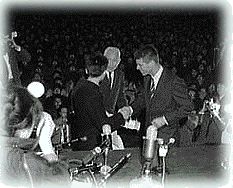Birth in a pastoral setting
Obuchi was born in the town of Nakanojo in Gunma Prefecture on June 25, 1937. Nakanojo, located about 130 kilometers north of Tokyo, is roughly in the middle of Japan's main island of Honshu, and it is in a verdant setting surrounded by mountains. Gunma is known as a cradle of modern Japan's sericulture--the raising of silkworms for producing raw silk--and Kohei Obuchi, the Prime Minister's father, was the manager of a silk mill. Keizo was the second son of Kohei and his wife Chiyo.
In each of his six years of elementary school, Keizo served as president of his class. He went from elementary school to a local middle school but then, at the age of 13, transferred to a private middle school in Tokyo at the urging of his father, who was then serving as a member of the House or Representatives. Since then the Prime Minister has made Tokyo his home.
Preparing for a political career
Upon finishing high school, Obuchi was admitted to Waseda University in 1958, where he enrolled in the School of Literature. Having dreamed from his high school days of taking up a role on the international stage, Obuchi opted to major in English literature. But when his father died suddenly in 1958 at the age of 54, after having been elected to the lower house for the second time, Obuchi resolved to carry on his father's mission by entering the world of politics.
The first step he took was to join Waseda's speech club, which had served as a launching pad for notable political figures like Noboru Takeshita (prime minister, 1987-89). As the club's public relations representative, his accomplishments included the arrangement of a public debate among candidates for the governorship of Tokyo. He also took part in other extracurricular activities, including aikido training and body building, with the aim of developing skills and strengths that would help him become a successful politician.
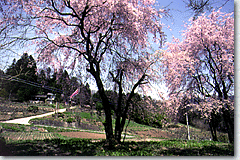
Nakanojo, Obuchi's home town, seen today
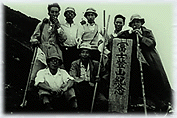
Climbing Mount Fuji as a high school student
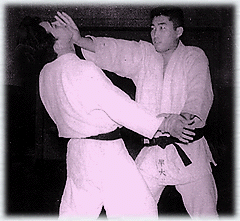
Obuchi began practicing aikido
at age 22 to build his body for
the stresses of a political career.

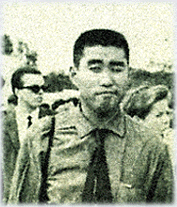 While in Berlin,
While in Berlin, 
